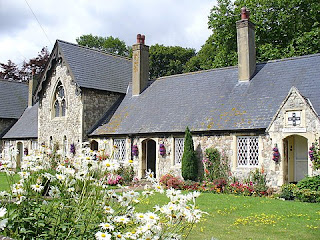It was built on a hill overlooking the River Seine in the Andeli territory of Walter de Coutances, Archbishop of Rouen. Richard I of England, King of England and Duke of Normandy, wanted the site for a fortress from which he could mount a campaign against King Philip II of France, who was encroaching on Richard's continental possessions. The archbishop refused, but Richard seized it anyway, causing a controversy that was explained here.
Although a treaty with Philip agreed that neither of them would attempt to build on the site, Richard went ahead anyway, and created a magnificent fortress in a mere two years. Richard's father, Henry II, had spent enormous sums building castles to protect the royal possessions, and Richard's efforts in building were significantly reduced, but Château Gaillard cost £12,000 from 1196-98, whereas only £7,000 was spent on construction in England.
Some of the earliest information we have on castle construction is recorded concerning Gaillard. We see lists of payments to miners, quarrymen, and the carters who brought stone to the site; stonecutters, masons, and lime workers for mortar; carpenters, smiths, assistants, and even water carriers; and soldiers who guarded the site while the work went on. Missing is mention of a master mason, who would have overseen the project, and it is suggested that Richard himself chose and ordered the design. Richard spent a lot of time during the two years of construction on the site.
It was designed with three enclosures separated by dry moats, and with machicolations, which were protected openings above the outside edge of the walls so that defenders could shoot down on anyone reaching the base of the wall [link].
There were incidents during construction. William of Newburgh wrote of a "rain of blood" that fell in May 1198, that alarmed the men as a bad omen, but Richard did not let it stay the work. Also, when some Welsh mercenaries were ambushed by the French, three French soldiers were captured and thrown off the walls to execute them.
Richard did not have much opportunity to enjoy his creation, dying less than a year after it was finished. The history of Gaillard did not stop there, however, and tomorrow I'll tell you how his successor, John, lost it (as he lost so many things), not long after.



.JPG)















